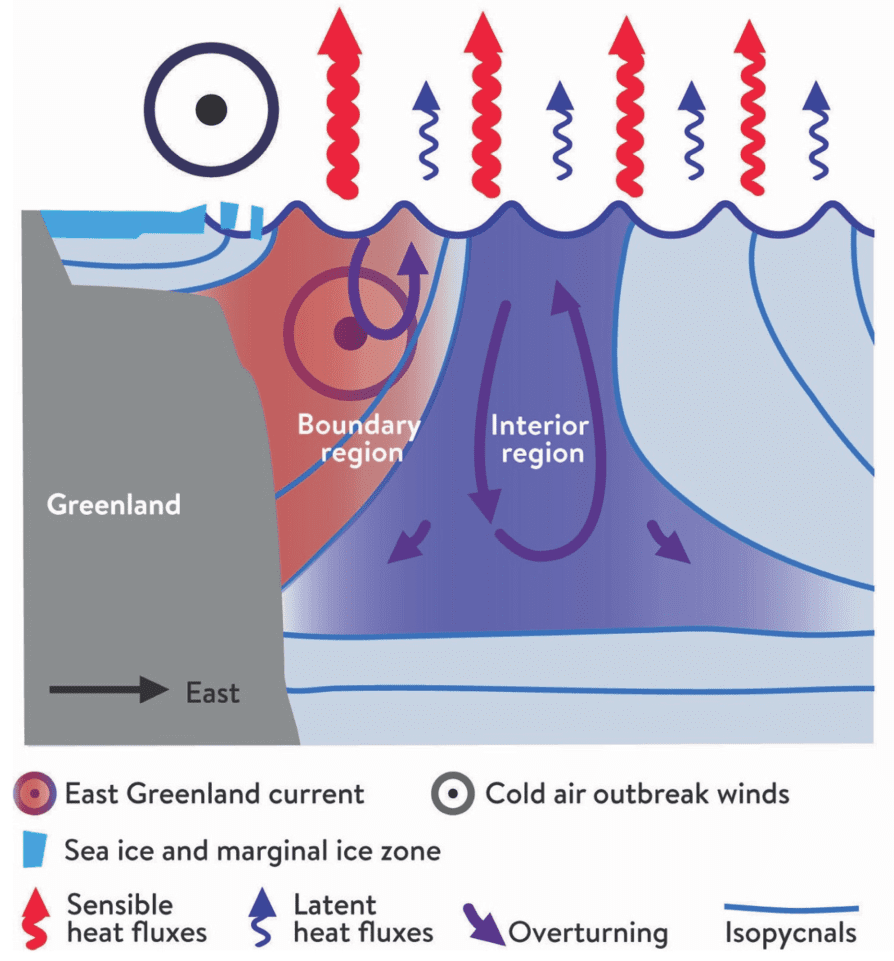Coupled atmosphere‐ocean observations of a cold air outbreak and its impact on the Iceland Sea
Renfrew, I., Huang, J., Semper, S., Barrell, C., Terpstra, A., Pickart, R., Våge, K., Elvidge, A., Spengler, T., Strehl, A., & Weiss, A., 2022. Coupled atmosphere‐ocean observations of a cold air outbreak and its impact on the Iceland Sea. Quarterly Journal of the Royal Meteorological Society. https://doi.org/10.1002/qj.4418

A schematic of the ocean mixed-layer response to this cold-air outbreak (CAO) event, illustrated via a cross-section of the Iceland Sea. In the boundary region there is a warming of the mixed layer (red shading), primarily due to the advection of relatively warm and salty water via the East Greenland Current (EGC); while in the interior region there is a cooling (blue shading), primarily due to surface heat loss into the atmosphere and an associated increase in mixed-layer density. (Image provided by Stefanie Semper)
In winter 2018, we went to the Iceland Sea to chase storms. In this paper, we present the first observations of such a winter storm, or cold-air outbreak, that have been obtained in both the atmosphere and the ocean from a variety of measurement platforms. The cold-air outbreak lasted for two weeks; it started abruptly and evolved in strength from a weak to a moderate event. In the atmosphere, the cold-air outbreak was vertically well mixed and spatially homogeneous except for a gradient in near-surface meteorology and surface fluxes near the sea-ice edge. The response of the cold-air outbreak on the Iceland Sea was spatially dependent: in the interior of the Iceland Sea, the mixed layer deepened, cooled, and slightly increased in salinity due to the atmospheric forcing. In the boundary current region, the mixed layer deepened, warmed and became significantly saltier due to the dominance of lateral advection and mixing with waters of Atlantic origin. Cold-air outbreaks are responsible for the majority of oceanic heat loss in this area, which in turn is important for the formation of dense water that may supply the Atlantic Meridional Overturning Circulation.
